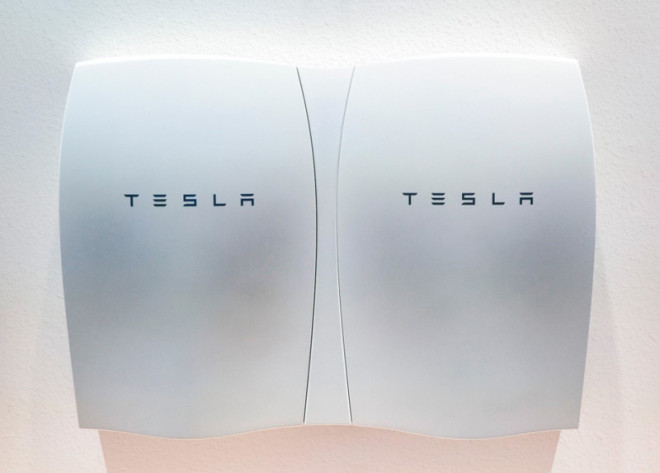Increasingly we hear the phrase ‘living off the grid’ in reference to just about anything from living reclusively in a shack without running water, to turning off our mobile phones for an hour once or twice a week. Finding some balance between reducing our dependency on the grid, while still living ‘within the box,’ so to speak, has been difficult—people usually feel it means a total departure from urban life as we know it and it simply isn’t realistic. However, the Tesla Powerwall may prove to be a total game changer in this respect. Last month, electric car giant Tesla Motors Inc. released an in-home lithium battery system that uses electricity generated from solar panels, or during lower-rate periods, as an alternative to grid power. In addition, it can be used as backup in case of an outage. Initial sales are very encouraging—preorders have already sold out until mid-2016. One could perhaps liken the Tesla Powerwall to the Goldilocks of living off the grid. Read on to learn more about how the Powerwall works and how it promises to deliver off-grid living that is just right.
Tesla pitches the Powerwall as an alternative that “bridges [the] gap between renewable energy supply and demand by making your home’s solar energy available to you when you need it.” Having a battery system means that you can store energy during the day, typically when there is maximum solar energy production, so that it is readily available for use during the mornings and evenings when consumption is higher. In addition to storing energy from solar, Powerwall stores energy during low-consumption periods when rates are typically lower. Some key things to know about the Powerwall:
- The system comes in two different models based on kilowatt-hour (kWh) cycles. A kWh is equivalent to 1,000 watts of energy used over the course of one hour. Powerwall is available with either a 10 kWh weekly cycle for $3,500 USD or a 7 kWh daily cycle for $3, 000 USD.
- Prices do not include the cost of an inverter to convert power from direct to alternating current (DC to AC) or installation.
- Units can also be installed in groupings of 9 up to 90kWh for the 10kWh model and 63 kWh for the 7 kWh model.
- There is also a commercial version—the Powerpack—which delivers 100 kWh and can be used by electric utilities and other companies. According to Tesla CEO Elon Musk, the Powerpack is “infinitely scalable.” For example, a utility company has requested a 2,500 Powerpacks to run a 250 megawatt-hour facility.
- Commercial sales of the Powerwall system in Canada will begin in early 2016 via a joint venture between NRStor Inc. and electrical grid software engineering firm Opus One Solutions Energy Corp.
- Each Powerwall unit weighs approximately 100 kilograms and resembles a large, sleek pod that hangs on the wall.
- During a May 6th earnings conference call, Musk announced that, within its first week, the home system had already received 38,000 reservations and the commercial system had received 2,500.
Not only does the Tesla Powerwall represent a fundamental shift in accessibility of residential and commercial energy storage, the company is also committed to creating manufacturing facilities that will positively contribute to the community while increasing production levels such that the global price of lithium ion batteries will drop significantly; making the technology that much more accessible to a broader market. One such facility is currently under construction in the United States.
The Tesla Gigafactory is being built outside of Sparks, Nevada and cell production is expected to begin in 2017. According to the Tesla website, by 2020, “the Gigafactory will reach full capacity and produce more lithium ion batteries annually than were produced worldwide in 2013.” The factory’s design is quite remarkable—the entire roof is covered in solar panels and there are adjacent turbines, which will help power the massive building, with the ambitious goal of achieving net zero energy. In addition, the project will result in thousands of jobs and an estimated one hundred billion dollars in economic impact over 20 years. By ramping up the production of lithium ion batteries and using lean manufacturing practices, it is estimated that Tesla will be able to reduce the per kWh cost of the battery pack by approximately 30 percent.
It may be too soon to tell if the Tesla Powerwall will develop a cult-like following that will completely revolutionize the energy industry. The Powerwall has appeal and hype reminiscent of Apple’s iPhone and while critics are already quick to question the overall energy cost savings, particularly when used for load sharing, there’s no doubt that Tesla’s Powerwall has succeeded in finding the sweet spot in the energy storage market. Getting off the grid has never looked so good or been so within reach.
About The Author

-
Serial Entrepreneur, Technologist and Inventor.
My objective is to develop useful products that have a net positive effect in the lives of those that use them and the environment that we live in.
CEO of Mission LED Lighting Company Ltd.
- 2017.05.24LED factsWhy Are Cars Switching to LEDs if They’re Too Bright?
- 2017.05.09Be green & saveHow to Easily Replace T8 Fluorescent Tubes With LED
- 2017.03.07Build a better future7 Things About Explosion Proof LED Lighting You Should Know
- 2017.02.28Be green & saveWhy We Love LED Grow Lights (And You Should, Too!)





Leave a Reply